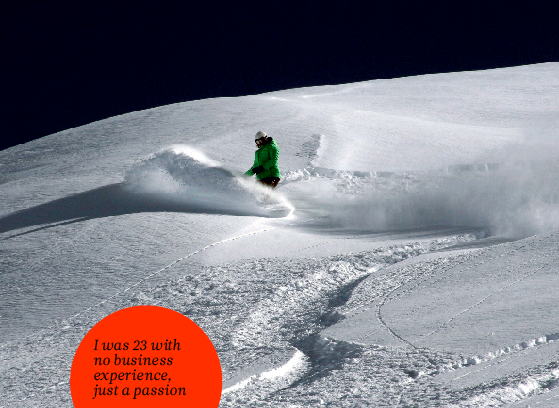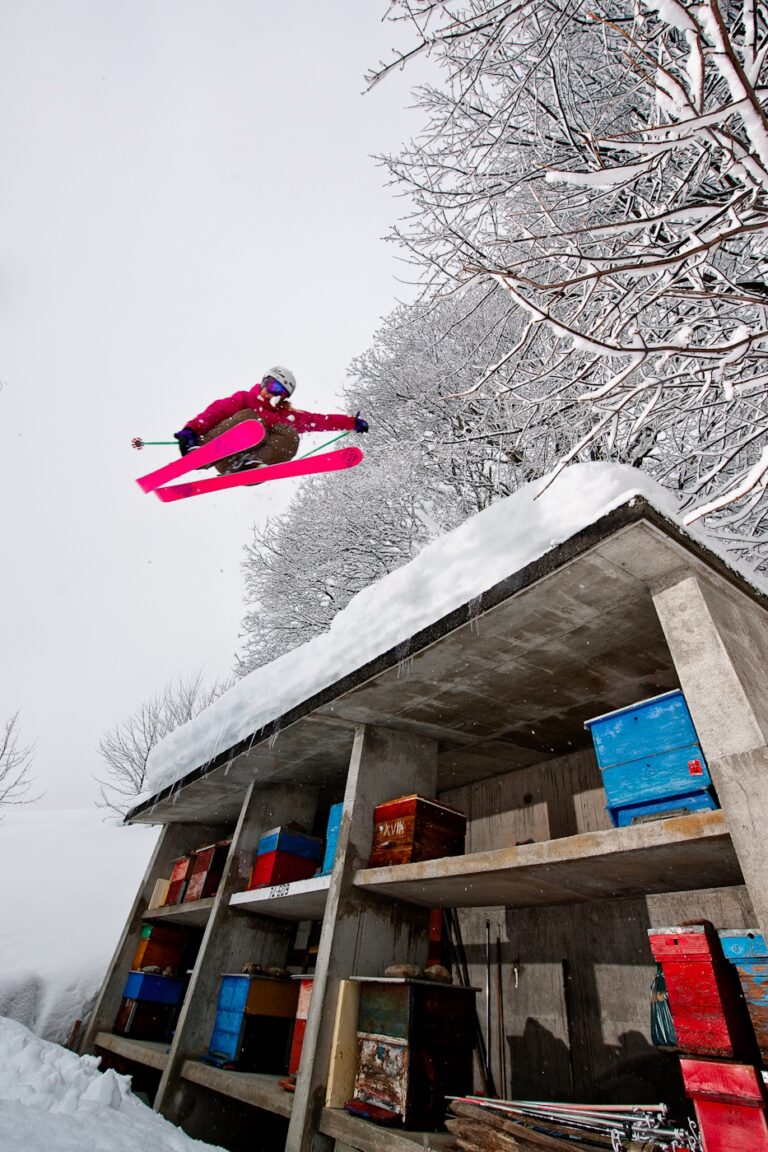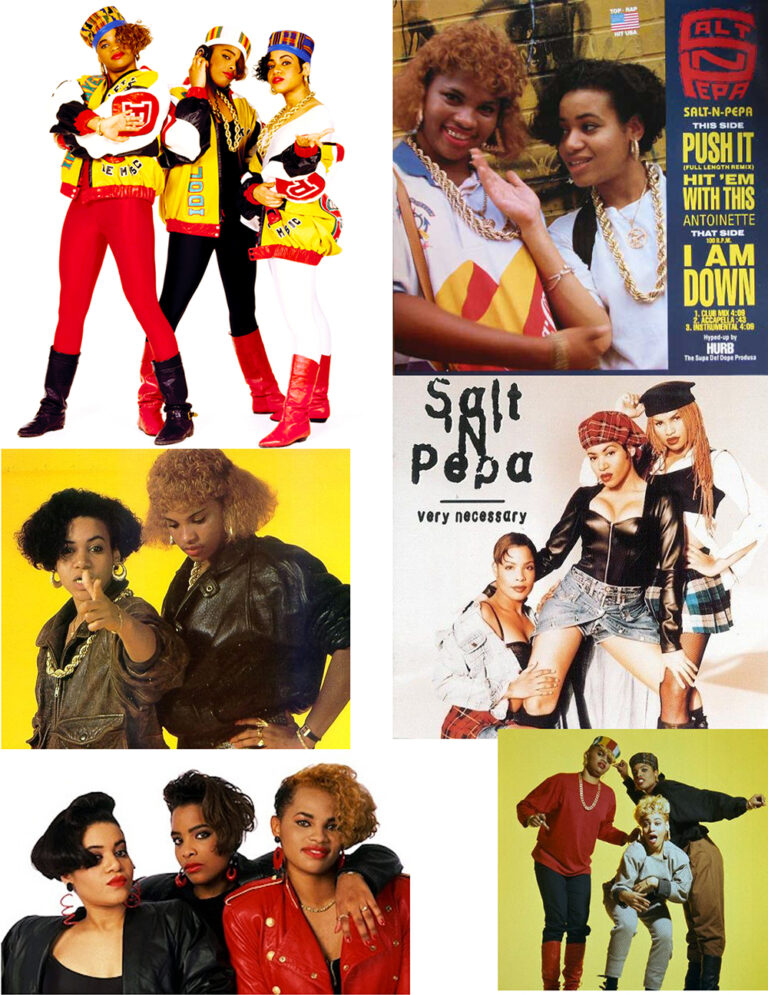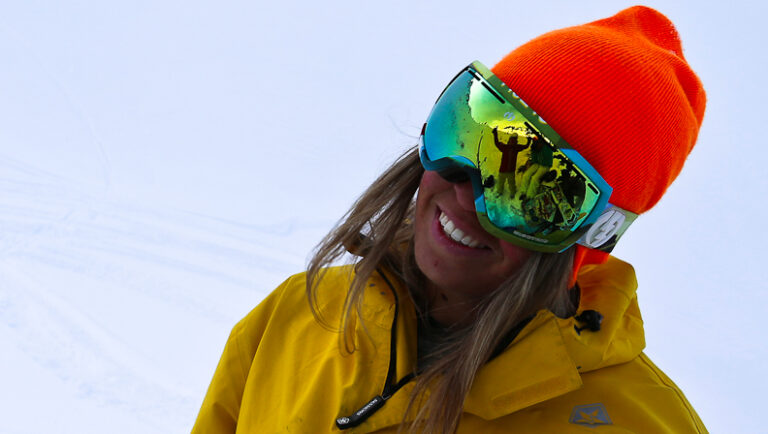
In anticipation of the 3rd Women in Boardsports lunch at ispo this year (ATTENTION!!! NEW TIMEFRAME: 12 – 2 pm!!! – make sure to pop by if you’re around!), we dugg out our stories on the very first get together back in 2009 that was printed in issue 25 of Cooler Magazine. And since we’re super excited to hear what Burton co-president Donna Carpenter Burton has to say in 2013, how the female market has progressed since then and what she sees as the way forward in the future, here’s her background story with some amazing insights on what the struggles were like back in the days…
Write up by Sam Haddad
 My story is a good example of a career that took a different path from the one I was expecting. I met this guy Jake who was working by himself making something called a snowboard in his barn. And I thought he was kinda cute but you know I was in New York and I was going be a lawyer, and he was doing something in his barn with wood planks, two rubber straps and a rope on the end…
My story is a good example of a career that took a different path from the one I was expecting. I met this guy Jake who was working by himself making something called a snowboard in his barn. And I thought he was kinda cute but you know I was in New York and I was going be a lawyer, and he was doing something in his barn with wood planks, two rubber straps and a rope on the end…
It was 1980/81, but somehow things took that turn and right after we married, and then moved to Europe. Not because we had a grand plan to be a global company, but more as I’d grown up in New York and then suddenly I was in Vermont where there were more cows than people and I was like, “What did I do, I just made a huge mistake!”
I had no intention of working for Burton, I actually had another job lined up
He wanted to work on production, and that was when snowboards went from being a wooden board to using ski production and that technology was here, as was plastic moulding for bindings. I had no intention of working for Burton, I actually had another job lined up, but he said, “Look at these enquiries, people are interested in snowboarding,” and next thing I knew I was setting up an office in Innsbruck.
Growth was explosive, and the European market is almost as big as the US for us and I always say that we were very successful in Europe, as I had no idea what I was doing. I was 23 years old, with no business experience, just a passion. I did have one thing in Europe that is important for anyone’s career though and that was a mentor in Hermann Kapferer, who still runs out European office today. He was a godsend. I turned to him for everything from setting up a warehouse, reading a balance sheet, getting cash flow, and so on.
After four years I decided to go back to the States. Mostly as Jake was spending lots of time there and Hermann used to say, “Are you going to make babies by fax?” Haha. I became Chief Financial Officer at Burton, as we had no budgets or projections, and our accounting was a mess. It was a challenge for me and I would still call Hermann everyday.
I felt like a bad mother a lot, my son was in daycare and I had to be there at 5.30 and if I wasn’t I’d get there and find my son sitting outside with the teacher.
I started having a family and then faced for the first time what every working mother faces – total stress. I felt like a bad mother a lot, my son was in daycare and I had to be there at 5.30 and if I wasn’t I’d get there and find my son sitting outside with the teacher. But I didn’t feel like I was doing 100 per cent at my job either, as I’d have to leave meetings at 5pm. Or there’d be times when we really needed money from banks and I’d be going around with proposals and this banker looked at me with horror once and I realised I had breast milk leaking everywhere. It was so professional!
So it was really difficult, which brings me to my role at Burton now, which is the Women’s Leadership Initiative. It started six years ago when Jake was in a room full of all of our directors all over the world, and he looked around and there were 20 people but only three women. He knew instinctively that we had a problem.
Women make up half the talent, and if you don’t use them you’re not pooling from all your resources.
Why? Because women make up half the talent, and if you don’t use them you’re not pooling from all your resources. Plus decisions are better when you have people from different backgrounds and perspectives looking at a problem. Companies can’t innovate and come up with new creative ideas if everybody at the same table has the same background. And it’s interesting as when the company started it wasn’t like that. When I was in Europe, the head of marketing, and product testing were all women. There were more women managers than male but what happened was the industry grew so quickly and we just needed people as fast as possible, so we pooled from skate, surf, ski, and all these traditional sports were male dominated.
We had a problem that we still have which is when we put a job ad out we get a 95 per cent male response. Somehow the company went from being very balanced, and women were very much involved in pioneering snowboarding from the beginning in terms of riders and product managers. Women have a strong heritage in snowboarding and you don’t have to make that up and say, “Oh let’s include women now,” as they’ve always been a big part of it but that had gotten away.
So I interviewed employees and team riders and asked what we could do to get more women in, to keep them happy and advance them to become leaders in the company. For recruitment we changed where we were looking, but we also realised people were having a hard time balancing family and from a company perspective you invest in a woman for 10 to 15 years and then you lose her? It was crazy but we hadn’t dealt with it.
At first, the Women’s Leadership Initiative was perceived by the men in the company as a threat, but now it’s benefited the entire company.
When I was Chief Financial Officer the way I finally dealt with this was to do a four-day week and it changed my life. So we put in very generous maternity leave, flexible options for when they come back and mentoring. We bring in speakers, encourage all the women to ride and do surf trips. At first the Initiative was perceived by the men in the company as a threat, but now it’s benefited the entire company. We now give paid for paternity leave, pay up to half the childcare costs, and more men than women are taking advantage of that programme.
We always marketed and did products for women but it didn’t take me long to realise that when you have a group of guys sitting around making decisions about women’s product it’s not going to appeal to women. We were doing a fine job especially in hardgoods, but I knew we weren’t going to take it to the next level. Shannon Dunn had her board called the Feelgood, our most successful board ever, but the guys in hardgoods would’t call it a Feelgood. There were like, “That’s some weird sex thing.” But she sat in that office and wouldn’t give up.
What inspires a woman to snowboard is different from what inspires a guy, and women respond much more emotionally to a company.
As a company we were guilty of taking the men’s jacket and pinking and shrinking it. So we split the creative product by gender and now there’s a women’s team, before women would be an afterthought, with the energy going into the men’s. What inspires a woman to snowboard is different from what inspires a guy, and women respond much more emotionally to a company. I have a very clear goal – I want women to be 51 per cent employees, 51 per cent of senior management and 51 per cent of the market, then I’ll be happy.





